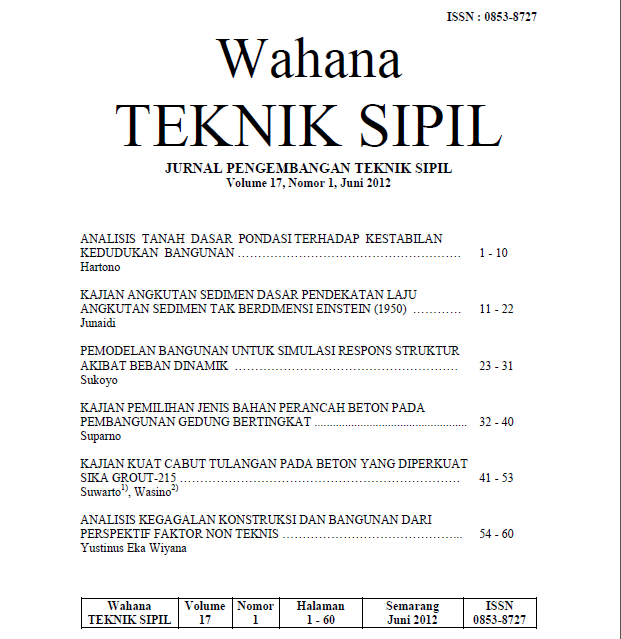Pemodelan Bangunan Untuk Simulasi Respons Struktur Akibat Beban Dinamik
DOI:
https://doi.org/10.32497/wahanats.v17i1.111Keywords:
response structure, dinamic load, modelAbstract
The response structure due to dynamic load or earthquake in a building is very important to be know.Therefore we tried to do some research with make a model that can show the behavior of structure when receives the dynamic load. In this research the structure is modeled with two-dimensional discrete system with a system of beams and columns of the same strength, it is easier to see the behavior of structure. The system is made by Power Fortran language program Station. The methods used for solve structural vibration dynamical equations is the Runge-Kutta order 4. The results shown in graphical form with the help of MS Excel program. From the graph shows that the pattern of responses produced is same with a given load pattern but have different intensity and deviation. Beside that , the structure will receives displacement, velocity, and acceleration are greater when receiving a load that is not harmonious with the same frequency. This suggests that the structure would be more resistant to a greater load if given regularly, compared with the sudden load.
Downloads
Published
Issue
Section
License
Authors who publish with this journal agree to the following terms:Authors retain copyright and grant the journal right of first publication with the work simultaneously licensed under a Creative Commons Attribution License that allows others to share the work with an acknowledgement of the work's authorship and initial publication in this journal.
Authors are able to enter into separate, additional contractual arrangements for the non-exclusive distribution of the journal's published version of the work (e.g., post it to an institutional repository or publish it in a book), with an acknowledgement of its initial publication in this journal.
Authors are permitted and encouraged to post their work online (e.g., in institutional repositories or on their website) prior to and during the submission process, as it can lead to productive exchanges, as well as earlier and greater citation of published work (See The Effect of Open Access).






